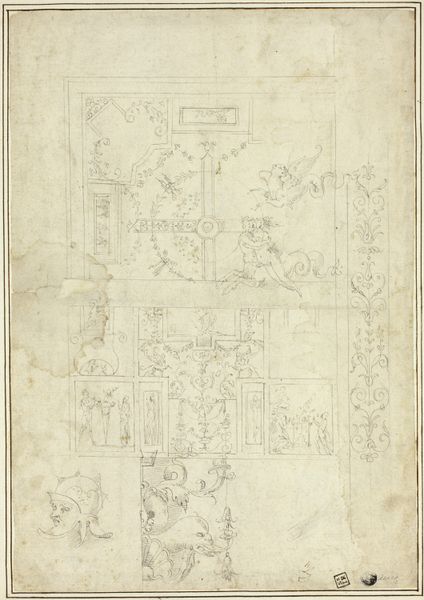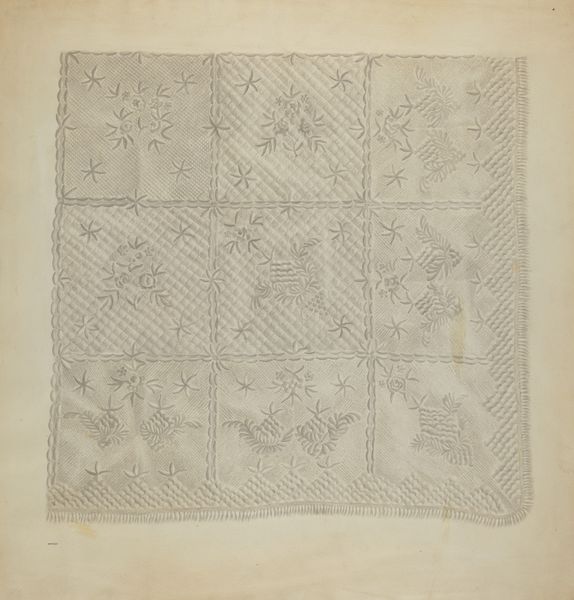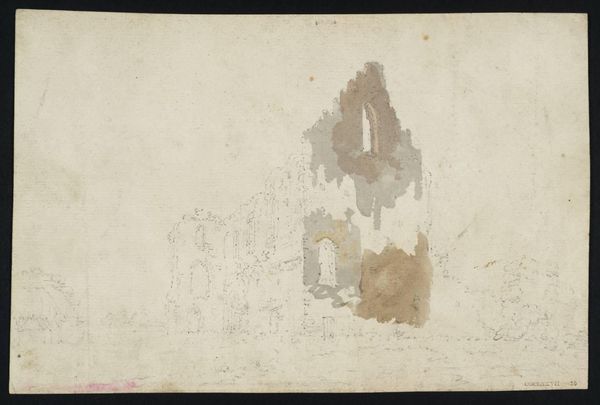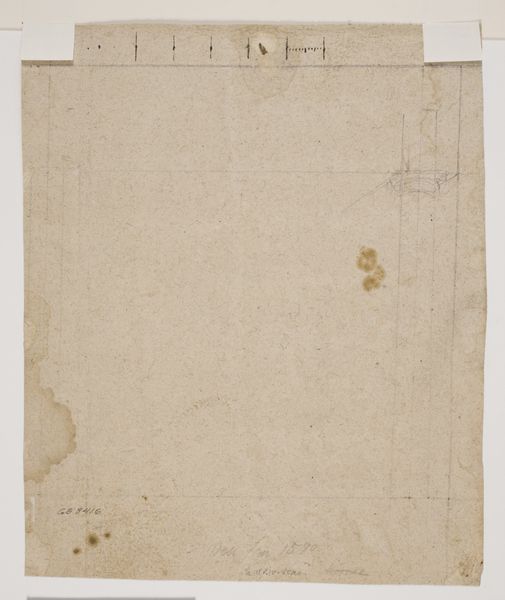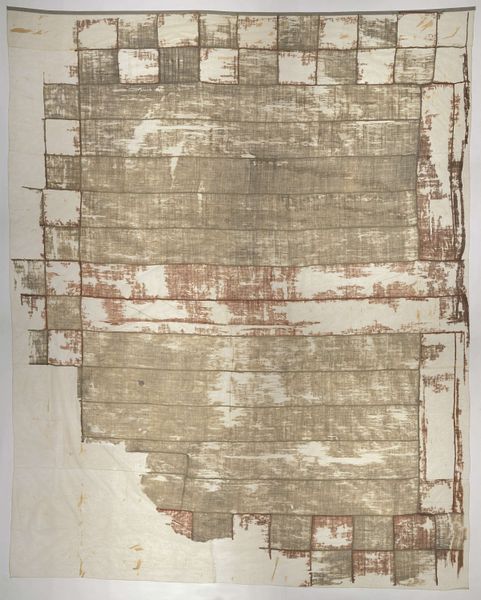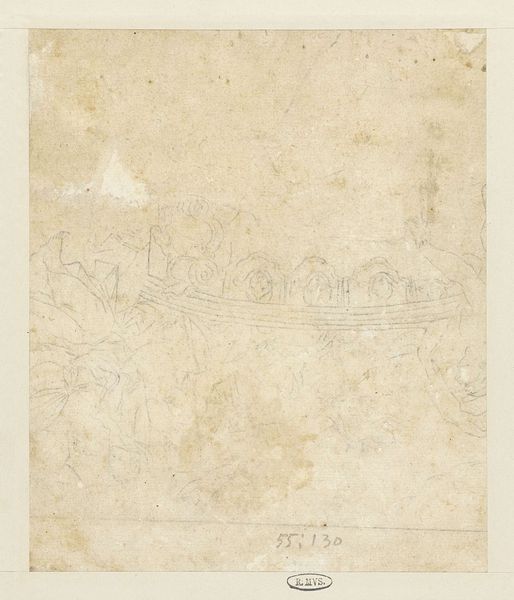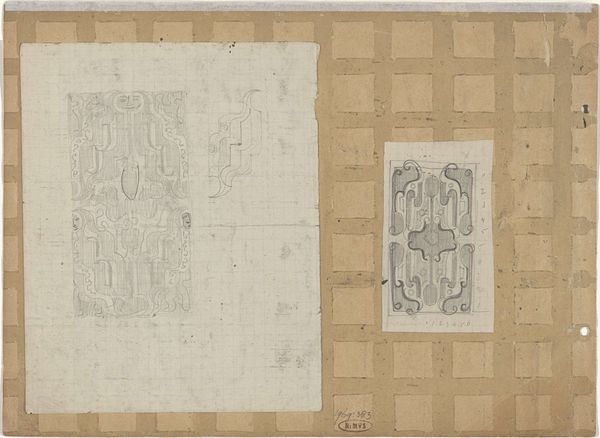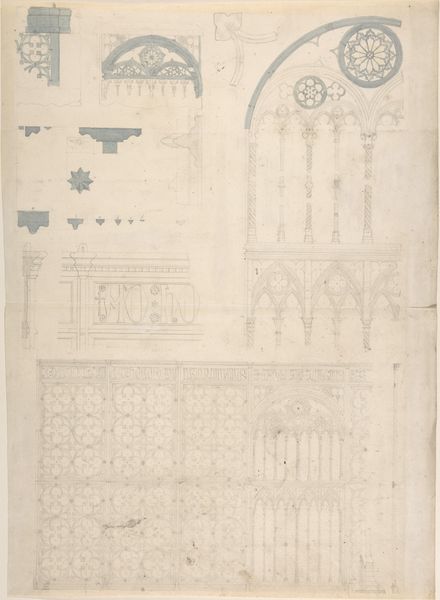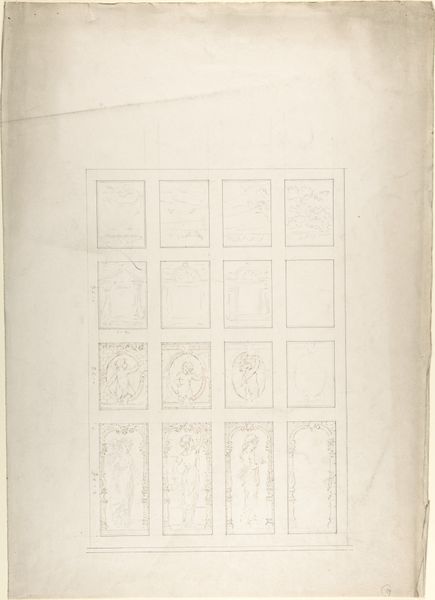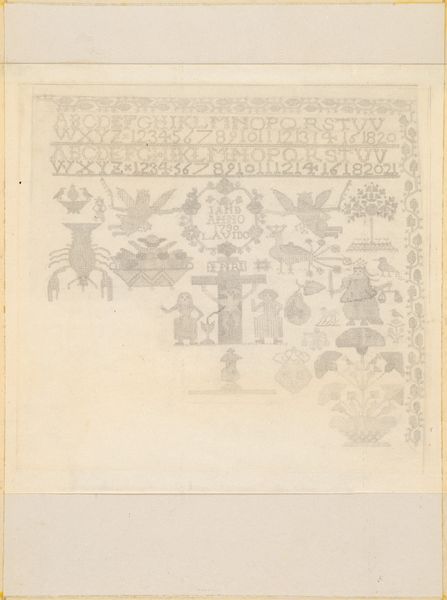
Nude and Fish with Flowers (Study for etched bathroom window) c. 1900
0:00
0:00
drawing, paper, pencil
#
drawing
#
art-nouveau
#
figuration
#
paper
#
pencil
#
nude
Dimensions: image: 45.3 x 33.8 cm (17 13/16 x 13 5/16 in.)
Copyright: National Gallery of Art: CC0 1.0
Curator: Looking at this work by Karel Vitezslav Masek, titled "Nude and Fish with Flowers," a study circa 1900, I'm immediately struck by its ethereal quality, like a memory or a dream rendered in delicate pencil on paper. Editor: I agree. The overall impression is incredibly subtle, almost as if it is intentionally trying to disappear. Given that it's a study for a bathroom window, the domestic intimacy is also notable. What kind of symbolic interplay is at play here, do you think? Curator: Knowing that Masek was working within the Art Nouveau style, a movement deeply invested in naturalism and the female form, these flowing lines evoke the organic vitality associated with both, wouldn’t you say? Nymph-like figure among fish and floral arrangements...it's an idyllic and sensual merging. Editor: Absolutely. Art Nouveau's aspiration to bring art into everyday life, combined with its sensuous representation of the female form, tells us much about early 20th-century bourgeois aspirations, doesn't it? A naked woman for the intimate space of a bathroom suggests a society becoming perhaps more comfortable with representing—but also possessing—female sexuality, in private if not in public. Curator: Interesting point about "possessing" it! Perhaps the arrangement reflects also ancient notions linking female bodies to nature’s abundance. Consider fish and flowers – fertility symbols – combined with the unclothed form; they tap into archetypes associated with the life-giving force of femininity. Editor: I like that idea about "life-giving forces". It underscores the cultural shift Art Nouveau navigated. On one hand, industrialization and modernity pulling in one direction and the longing to recapture what were perceived to be purer, pre-industrial values embodied in depictions of nature and idealized women. But who could see that window? And what did *they* make of it? Curator: Exactly – a window literally framing those archetypes. The etched glass might diffuse light in ways meant to transform how one experienced self and nature. A space for ritual cleansing infused with reminders about eternal return – themes prevalent in various turn-of-century symbolisms. Editor: Indeed, thinking about it, Masek seemed intent on inviting reflection... both literally and figuratively. Thanks to that reflective surface! I’m intrigued by Masek’s ambition to inscribe this kind of thematic language directly into everyday life of the bourgeoisie, quite audacious for its time. Curator: Absolutely audacious, which makes rediscovering it more thought-provoking even now.
Comments
No comments
Be the first to comment and join the conversation on the ultimate creative platform.
